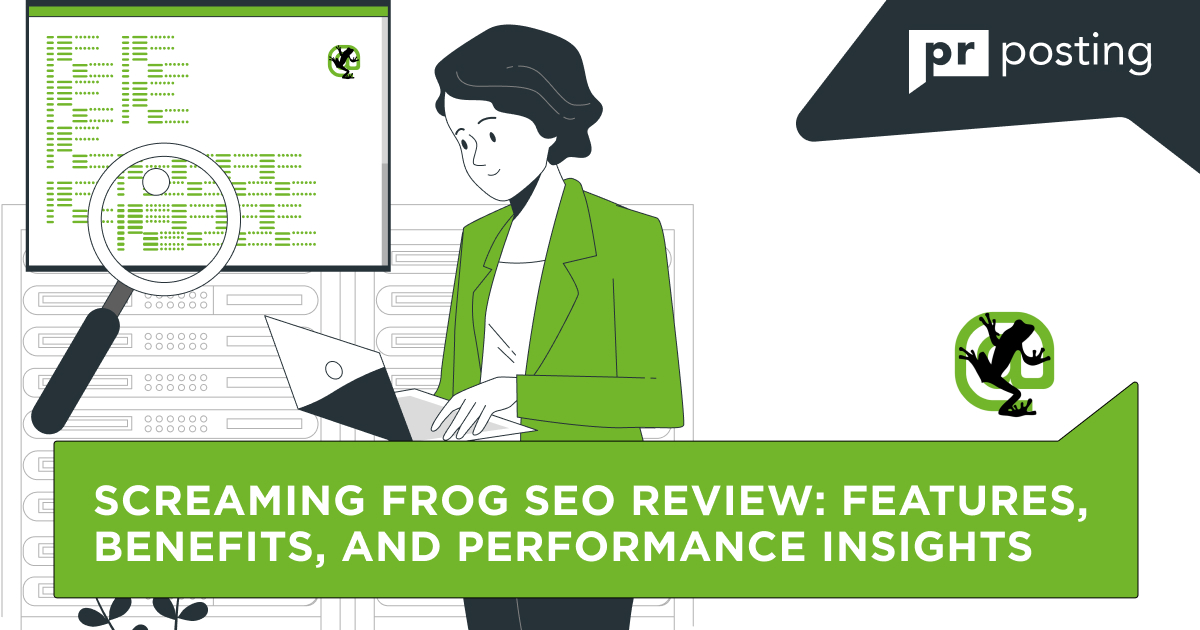Google Keyword Planner for SEO: Features and Capabilities

This tool selects SEO-friendly keywords and enhances organic and paid traffic.
Marketers, advertisers, and SEO professionals use it to:
- Identify high-impact trending keywords;
- Estimate traffic potential and cost per click advertising;
- Discover untapped opportunities for Google paid campaigns.
Unlike introductory keyword research SEO tools, it combines forecasting with competition analysis. This ensures smarter content planning and optimized advertising investments.
How Does Google Keyword Planner Improve SEO Strategy?
- Pinpoints seed keywords that match search intent.
- Reveals seasonal trends and market shifts.
- Calculates estimated traffic and budget requirements.
- Refines keyword lists with filtering tools.
This review takes a look at Google Keyword Planner features, explaining how to use them for your SEO strategy.
Essential Google Keyword Planner Features
Discovering SEO Relevant Keywords
Finding the right keywords determines your SEO success. Google Keyword Planner provides a structured approach to finding SEO relevant keywords.
Using Seed Keywords and URLs to Find SEO Relevant Keywords
Enter a seed keyword, website URL, or product category. The tool generates a tailored list of suggestions based on search behavior.
Seed keywords create the basis for keyword discovery. URLs analyze existing content to suggest applicable terms. Product categories align keywords with niche-specific searches.
Filtering options allow you to customize based on:
- Search volume;
- Keyword competition;
- Estimated cost per click.
Identifying Trending Keywords for Content Optimization
To stay ahead, you need to track trending keywords. Google Keyword Planner reveals emerging search terms that influence content and advertising strategies.
- Check the “Trending now” for new queries.
- Compare keyword search volumes over time.
- Align campaigns with seasonal shifts.
Using Google Keyword Planner helps businesses improve content and maximize visibility in Google.
Search Volume Insights and Forecasting
Understanding keyword trends improves targeting and enhances campaign performance. Google Keyword Planner reveals fluctuations in search interest, helping marketers adjust their strategies. Seasonal shifts impact demand, making forecasting essential for sustained visibility.
Keyword Trends and Seasonal Fluctuations
Marketers must track SEO relevant keywords to align with search behavior. Google Keyword Planner provides important data, revealing search volume patterns.
- Identify peak periods for high-demand keywords.
- Detect declining terms to avoid low ROI efforts.
- Adapt campaigns based on seasonal search variations.
Forecasting Clicks and Impressions
Google Keyword Planner features include traffic estimations. Marketers can assess keyword efficiency before running ads. This is how to do it:
- Enter a seed keyword to generate predicted clicks.
- Compare impression estimates across different keywords.
- Adjust budgets based on expected performance metrics.
This predictive approach enhances cost per click and the effectiveness of advertising.
Optimizing your Google paid campaigns requires strategic spending planning. Cost per click allows you to evaluate bidding decisions and ensures efficient spending.
Estimating CPC to Optimize Google Paid Campaigns
Google Keyword Planner provides bid suggestions for each keyword. This data helps businesses make the most of their budgets.
- Analyze average CPC for competitive terms.
- Compare bid ranges to identify profitable opportunities.
- Set realistic budgets to balance transparency and costs.
Using Bidding Forecasts to Refine Advertising Spend
Bidding forecasts prevent spending on low-value terms. The benefits of Google Keyword Planner include predictive models that improve your ROI and SEO strategy.
- Adjust bids based on projected competition.
- Test multiple variations for optimal ad placement.
- Upgrade your spending to concentrate on high-converting keywords.
Data-driven decisions strengthen Google paid campaigns and reduce wasted ad spend.
Advanced Filtering for Targeted Keyword Research
Refining keyword lists ensures precise targeting. Google Keyword Planner offers extensive filtering options.
Refining Keyword Lists
Upgrade your research by removing irrelevant keywords. Marketers can improve results based on the following:
- Competition levels (low, medium, high);
- Minimal and maximum search volumes;
- Suggested costs per click range for budget alignment.
Using Google Keyword Planner features ensures campaigns reach the right audience effectively.
Filtering Brand Terms and Non-relevant Search Queries
Effective filtering enhances targeting in Google paid campaigns and SEO efforts.
- Exclude brand-specific keywords unconnected to your business.
- Remove non-relevant terms.
- Focus on trending keywords that align with user intent.
Google Keyword Planner SEO Strategy
Using Google Keyword Planner correctly improves visibility and drives conversions. This tool refines keyword research, boosts paid ads, and strengthens organic rankings. Search intent and competition analysis help businesses outperform their competitors.
Competitive Keyword and SERP Analysis
Understanding competitor strategies ensures better positioning in search results. Google Keyword Planner uncovers trending keywords and evaluates SERP performance.
Identifying Trending Keywords and Strategies of High-Performing Competitors
Tracking trending keywords gives insights into changing search behaviour. Competitive analysis highlights opportunities for content optimization.
- Keep an eye on keyword shifts and emerging industry trends.
- Analyze challengers’ ranking strategies to refine your content.
- Identify gaps where low competition meets high intent.
Using Google Keyword Planner to Gain SERP Insights
SERP analysis reveals valuable ranking patterns. SEO keyword research tools provide a deeper view of search performance.
- Compare keyword rankings across different keyword variations.
- Identify featured snippets and top-performing content.
- Adjust your strategy based on high-visibility search terms.
These insights are the foundation of Google Keyword Planner’s SEO strategy.
Optimizing Campaigns and Keyword Forecasting
Keyword forecasting improves targeting for organic and Paid Advertisements strategies. Predictive models help businesses allocate budgets effectively.
Benefits of Organic and Paid Content Strategies
Forecasting search trends enhance long-term planning. The benefits of Google Keyword Planner include performance projections of your selected keywords.
- Assess the need for new keyword demand to shape content.
- Predict seasonal fluctuations to adjust advertising efforts.
- Align keywords with marketing goals.
Aligning Paid Ads with High-Intent Keywords to Maximize ROI
Matching Paid Ads with user intent improves ad efficiency. Targeting high-value terms will boost engagement metrics.
- Choose keywords with the commercial intent.
- Adjust bids based on predicted conversions.
- Monitor cost-per-click fluctuations to control your budget.
Strategic alignment ensures high returns on advertising investments.
Landing Page and Video: SEO Insights
Analyzing landing pages and videos reveals hidden keyword opportunities. Optimizing content structure improves search relevance.
Landing Page Analysis
Finding key terms with Google Keyword Planner improves search optimization strategies.
- Identify underutilized keywords with ranking potential.
- Enhance metadata to match SEO-friendly keywords.
- Adjust internal links for better keyword distribution.
Using Audience Retention and Demographics to Optimize Video
Video content requires precision targeting. Google Keyword Planner features help you align topics with audience preferences.
- Analyze watch time to improve video structure.
- Use demographic insights to shape the content tone.
- Target trending video-specific keywords for better reach.
A well-optimized Google Keyword Planner SEO strategy ensures advanced rankings, better engagement, and increased conversions.
Limitations and Considerations
While Google Keyword Planner is an important tool, it does have limitations. Being aware of these restrictions helps you use it more effectively. The tool is optimized for Paid Ads users and offers better results for those running Google Ads campaigns. Without a deeper understanding of these limitations, users will not be able to take advantage of its full potential.
Restricted Data for Non-Advertisers
Non-advertisers face significant limitations when using Google Keyword Planner. The tool offers reduced insights for those not running paid campaigns, making keyword research less comprehensive.
- Unpaid users can only access limited keyword data. The search volume metrics are often presented in broad ranges.
- Keyword volume is not precise, reducing the accuracy of planning.
- Forecasting features are unavailable to non-advertisers.
- Data on competition and bidding options is limited.
Google Paid Campaigns Unlock More Detailed Data
When you run Google paid campaigns, you get more comprehensive data. Paid campaigns offer a clearer picture of how your keywords are performing.
- Get precise cost per click advertising data by revealing details.
- View the exact search volume and competition for each keyword.
- Unlock forecasting tools to help you plan campaign budgets.
- Access advanced bidding information to optimize ad performance.
Activating Google paid campaigns is essential for a more accurate and data-driven experience.
Paid Ads vs. Organic SEO
Google Keyword Planner supports organic and paid strategies, but it is more focused on Paid Ads. The tool’s primary focus on paid metrics means it often does not offer the depth needed for organic SEO efforts.
Paid Advertising Influences Data Availability
- The tool prioritizes paid campaigns and provides data that supports ad spend.
- Keywords are suggested based on paid search metrics.
- Search volume and competition levels align with Google Ads results.
- Organic search trends may not be completely reflected in the data.
Keyword Research for Organic SEO
For those focusing on organic SEO, alternative tools offer richer insights. They are more suited to discover long-tail keywords and identify organic search opportunities:
- Use Ahrefs to uncover high-ranking organic keywords and link data.
- SEMrush provides detailed organic keyword data and competitive analysis.
- Moz helps track organic rankings and provides insights for content optimization.
Combining Google Keyword Planner with these tools helps you create a comprehensive SEO strategy.
Conclusion
Google Keyword Planner is a powerful tool for paid and organic search strategies. It provides valuable keyword insights, features, and bidding tools for Paid Ads. However, integrating it with other tools is vital for deeper organic SEO insights.
Google Keyword Planner Benefits for Organic and Paid Search Strategies
- Unlocks cost per click advertising data to improve paid campaigns.
- Provides keyword suggestions based on search volume and competition.
- Offers budget forecasts for more effective campaign management.
FAQs
Can I use Google Keyword Planner for SEO?
Yes, Google Keyword Planner provides insights on keywords that are useful for SEO. It helps you identify high-value keywords for your content strategy.
How to use Google Keyword Planner without creating an ad?
Sign up for a Google Ads account without running ads. Use the Keyword Planner tool for keyword research, SEO, and content planning.
Is Google Keyword Planner accurate?
Google Keyword Planner offers reliable data for cost per click advertising and search trends. Accuracy improves if you have an active Google Ads account.
How do I find trendy keywords?
Use Google Keyword Planner to research popular keywords and their search volume. Analyze seasonal trends and emerging topics to create relevant content.




